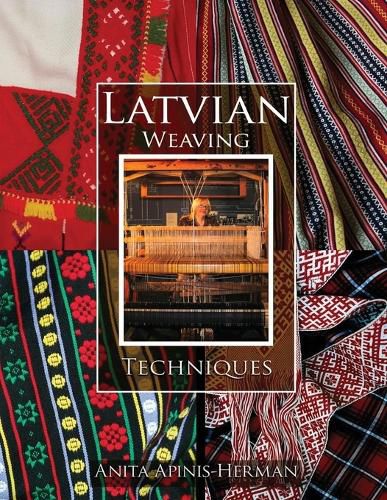Readings Newsletter
Become a Readings Member to make your shopping experience even easier.
Sign in or sign up for free!
You’re not far away from qualifying for FREE standard shipping within Australia
You’ve qualified for FREE standard shipping within Australia
The cart is loading…






This is a book about weaving techniques. The reader will notice that throughout the book references are made to Latvian examples where certain techniques apply. The reason for this is that both my parents are Latvian and my mother, Anna Apinis, is a weaver who studied in Latvia graduating from the Latvian State High School for Applied Art at Liepaja in 1933.
After the Second World War she immigrated to Australia in 1950, bringing her knowledge of weaving and weaving loom with her. In this book I want to document some of the wealth of information collected during my mother's years in Latvia and add what knowledge of weaving I have gained from the Melbourne College of Textiles, where I attended a course in hand loom weaving between 1984 and 1986.
The aim of the book is to present as many Latvian designs as possible using between four and eight shafts. A short but important chapter is devoted to the drawloom technique, which enables the weaver to easily manipulate up to seventeen shafts. Anna Apinis brought the drawloom shown in this book with her when she came to Australia.
It was built in Germany just after the war from wood found in the war-torn airforce barracks of the displaced persons camp, Memmingen, where she resided until the move to Australia. Basic definitions of loom parts and weaving equipment are included with a short description of drafting, which forms the groundwork for putting theory into practice.
$9.00 standard shipping within Australia
FREE standard shipping within Australia for orders over $100.00
Express & International shipping calculated at checkout
This is a book about weaving techniques. The reader will notice that throughout the book references are made to Latvian examples where certain techniques apply. The reason for this is that both my parents are Latvian and my mother, Anna Apinis, is a weaver who studied in Latvia graduating from the Latvian State High School for Applied Art at Liepaja in 1933.
After the Second World War she immigrated to Australia in 1950, bringing her knowledge of weaving and weaving loom with her. In this book I want to document some of the wealth of information collected during my mother's years in Latvia and add what knowledge of weaving I have gained from the Melbourne College of Textiles, where I attended a course in hand loom weaving between 1984 and 1986.
The aim of the book is to present as many Latvian designs as possible using between four and eight shafts. A short but important chapter is devoted to the drawloom technique, which enables the weaver to easily manipulate up to seventeen shafts. Anna Apinis brought the drawloom shown in this book with her when she came to Australia.
It was built in Germany just after the war from wood found in the war-torn airforce barracks of the displaced persons camp, Memmingen, where she resided until the move to Australia. Basic definitions of loom parts and weaving equipment are included with a short description of drafting, which forms the groundwork for putting theory into practice.